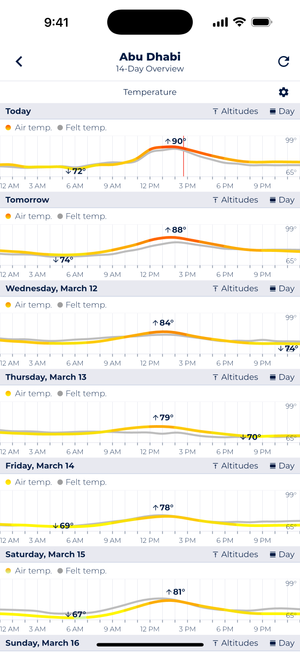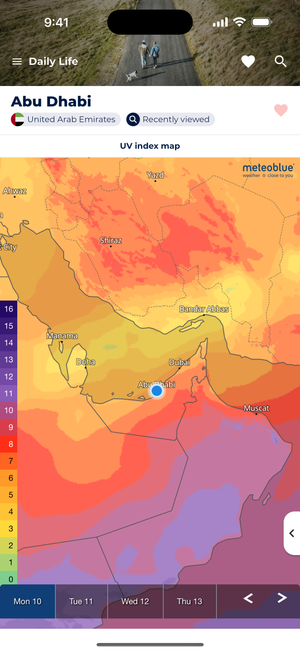
Strong heat may sound like a loose term for when the pavement outside is blistering, but it actually has a definition in the world of meteorology. Strong heat is defined as a situation when summertime temperatures become much higher or more humid than the expected average [1].
Depending on when and where you grew up, you may have limited experience with this phenomenon. However, the trend of extreme heat waves is continuing as the global temperature increases, with the frequency and intensity of these heat waves expected to continue rising throughout the 21st century.
Strong heat is defined as when summertime temperatures become much higher or more humid than the expected average.
Between 2000 and 2016, the number of people who were exposed to heat waves increased by 125 million. We have already seen the devastation that extreme heat can cause, with 70,000 excess deaths in Europe in 2003, and more recently, 56,000 excess deaths in only 44 days in Russia [2]. Scientists have narrowed the regions most likely to experience heat waves to Russia, Central America, China, Australia, and central Europe [3].
Heat waves kill more than floods, hurricanes, and tornadoes combined.
Strong heat occurs when summertime temperatures become much higher or more humid than the expected average. This phenomenon is increasing in frequency as global temperatures rise, with heat waves becoming more intense throughout the 21st century.
The regions most likely to experience heat waves are Russia, Central America, China, Australia, and central Europe. Between 2000 and 2016, exposure to heat waves increased by 125 million people globally.
Heat waves result from high pressure systems pushing warm air toward the ground. As pressure builds, air gets compressed and warms further. This heated air forces away cloud cover and winds, creating a cycle of increasingly hot temperatures.
Heat waves impact agriculture by making it difficult to maintain ideal growing conditions for crops. They also increase mortality in livestock like poultry, pigs, and cattle. Droughts can alter river courses, affecting fish populations and downstream agricultural fields.
During heat waves, electricity demand increases while power lines' conductivity decreases, potentially causing blackouts. Power plants are also affected as they often rely on natural water sources for temperature control that may be compromised during extreme heat.
Heat waves disrupt the body's temperature regulation. When outside temperatures and humidity are high, the body struggles to cool through sweating, which can lead to heat exhaustion, heat stroke, or death.
Effective cooling strategies include: keeping windows open at night but closed during day; staying hydrated; refrigerating medications; using cool towels; wearing loose clothing; avoiding outdoor activities during peak heat; establishing check-in plans; and eating smaller, frequent meals.
Yes, heat waves can be deadly. Historical evidence shows 70,000 excess deaths in Europe in 2003 and 56,000 in Russia over just 44 days. Heat waves kill more people than floods, hurricanes, and tornadoes combined.
Apps like Sonuby Weather offer tools including temperature forecasts, wet bulb temperature maps, UV index maps, and extreme weather maps to help predict heat waves and identify cooler areas during extreme heat events.
Climate change is directly increasing both the frequency and intensity of heat waves worldwide. Scientists project that heat waves will become more common throughout the 21st century, affecting larger populations across more regions globally.
Heat waves are caused by high pressure systems. This creates a push that shoves warmer air closer to the ground. As pressure builds, the air gets compressed, which also causes it to warm further [4].
Heat waves are caused by high pressure systems.
As the air heats, it also pushes out to the sides, changing the course of other weather systems and forcing away cloud cover or winds. This creates an ever-increasing loop of hotter and hotter temperatures [4].
During a heat wave, the birth rate goes down and the murder rate goes up.

Strong heat waves aren’t just uncomfortable—they can be downright dangerous. They also cause disruption to various industries that help to keep human life running smoothly, including agriculture, energy, and even human health.
Agriculture is often affected by higher heats, which you will understand if you have ever accidentally cooked a houseplant in front of a window. As the temperature increases, the ability to control the precise environment needed for high yield growth decreases.
Animal agriculture can also be affected by heat, with increased mortality often seen in poultry, pigs, or cattle. This is true even of farm-raised animals; heat stroke is just as difficult to manage for animal populations [5]. Droughts can also change the courses of rivers, impacting fish populations and affecting the health of downstream agricultural fields [5].
It may surprise you, but warmer temperatures also have an impact on the ability of your local power source to keep the aircon on. Not only does demand increase, but the ability of the powerlines to conduct electricity also decreases, which can lead to blackouts. Even whole power plants can be affected, as the temperature inside the plant is often controlled with the help of natural resources like lakes or rivers [6].
Every living thing is affected by an increase in temperature, and humans are no exception! For us, the most important factor of strong heat is how the increase in heat waves can affect the human body. Heat is regulated very closely in the human body through a variety of processes, including sweating [2]. However, the ability of the body to get rid of heat through sweat happens when heat is lifted from the skin; moisture is lifted and evaporates into the air.
When the outside temperature is higher, moisture in the air is often increased, meaning that the air has less capacity to take in new moisture. This can lead to an inability for the human body to regulate its temperature, and can cause illnesses including heat exhaustion, heatstroke, or even death [2].

Hydration is more effective than even electric fans (which may not work once the temperature gets over 95 degrees Fahrenheit).
It is vital to know how to stay cool even in the event of power cuts or other emergencies. The following tips and tricks will help you through even the toughest heat waves [2]:

Sonuby’s 14-day temperature forecast shows both actual and felt temperatures, helping you anticipate heat waves and plan activities during cooler periods.

Sonuby’s UV index map shows radiation levels across regions, essential for determining when additional sun protection is needed during heat waves.
Sonuby is a great choice for predicting when the next heat wave will be rolling into town.
It offers a number of great forecasts, including:
The maps in particular allow you to both predict heat waves at your location and easily find less hot and shady places to go.
[1] www.cdc.gov
[2] www.who.int
[3] www.cbsnews.com
[4] www.nytimes.com
[5] www.bom.gov.au
[6] www.c2es.org